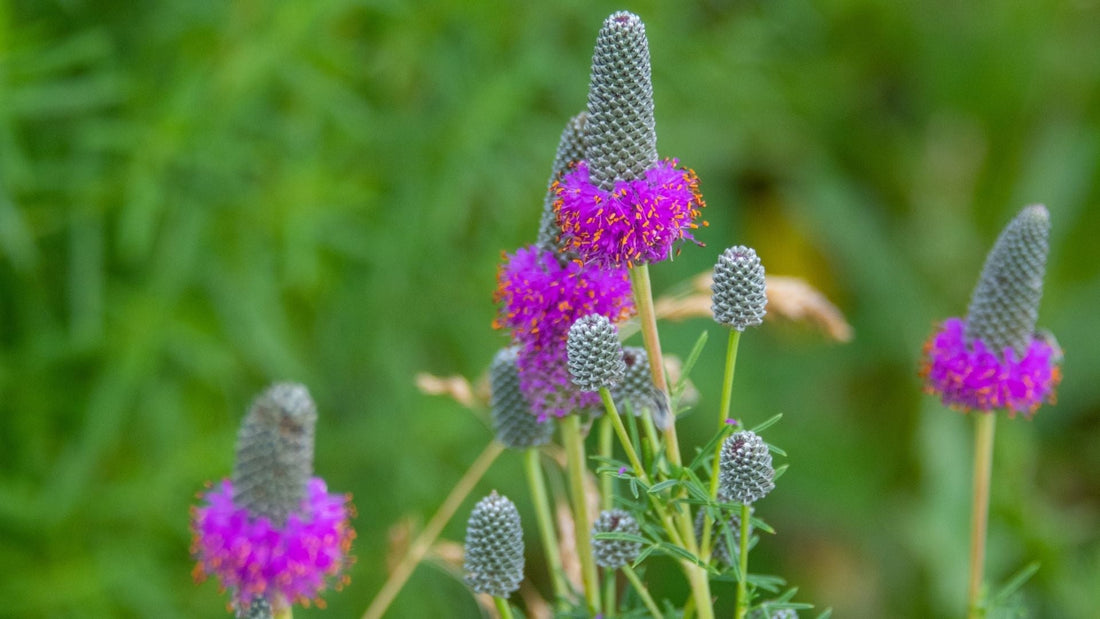
Grow Guide: Prairie Clover
Share
A native perennial prized for its vibrant purple blooms, deep roots, and use in prairie restoration—and yes, it’s also a gentle source of color for natural dyeing.
Prairie Clover is a tough, drought-tolerant plant that thrives in poor soils and full sun. It improves soil health by fixing nitrogen and supports pollinators, making it a great addition to eco-conscious gardens. While its dye potential is more muted than other flowers, it lends earthy, golden-tan tones when used on natural fibers.
Basic Info:
- Common Names: Purple Prairie Clover
- Color (for dyeing): Earthy yellow, tan, or warm brown
- Flower Type: Cone-like purple flower spikes
- Scientific Name: Dalea purpurea
Cultivation Info:
- Days to Maturity: Blooms in second year (establishes slowly)
- USDA Hardiness Zone: Perennial in Zones 3–9
- Planting Depth: 1/4 inch; lightly covered
- Plant Spacing: 12–18 inches apart
- Growth Habit: Upright, clumping; 1–3 feet tall
- Soil Preference: Well-drained, sandy or rocky soils; drought-tolerant
- Light Preference: Full sun
Additional Information:
- Taxonomy: Family Fabaceae (Legume family)
- Seed Type: Native wildflower; often available as regionally adapted ecotype
- Sow Instructions: Fall sowing is recommended to mimic natural cold stratification. For spring sowing, scarify and cold stratify for 4–6 weeks. Germination can be slow.
- Diseases: Minimal
- Pests: Rare; highly deer-resistant and pest-tolerant
Natural Dyeing Use:
Prairie Clover can yield warm tan to gold shades when whole plants (flowers and leaves) are simmered. The dye is gentle and works best with protein fibers like wool and silk. While not a primary dye plant, it can add subtle base tones in layered or bundle dyeing techniques. Its ecological value and native beauty make it a strong contender for regenerative dye gardens.
Troubleshooting Tips:
- Slow growth? Prairie Clover is a deep-rooted perennial—first-year growth is minimal while roots establish.
- Poor germination? Cold stratification and scarification improve success rates
- Crowding or weeds? Plant in a dedicated wildflower space or weed regularly until well established.
